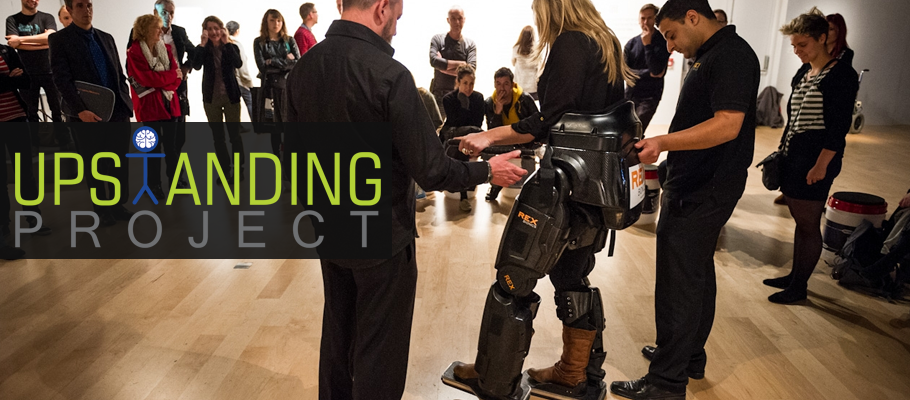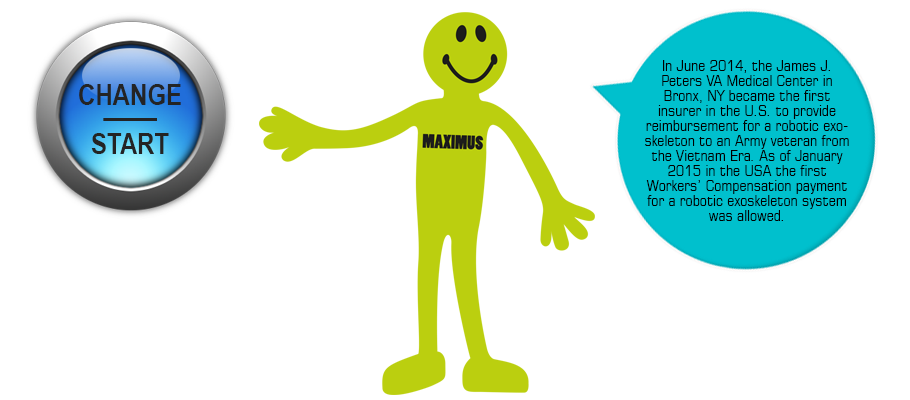Our Projects
- 1. Projects
- 2. Awareness & Advocacy
- 3. Neuro-rehab Centre

No. 1 UPSTANDING Project – HELLEN (Hunter Region, NSW)

Exoskeleton therapy is available at Breaking Boundaries with Pip Cave and her team.
MORE INFO
Special thanks to the nib Foundation for making more than 100 exoskeleton therapy sessions free for Hunter residents. The AIN is dedicated to raising more funds to make HELLEN accessible to Hunter residents in need.

Funds raised enable us to offer physiotherapy sessions. Help us improve lives 1 exercise session at a time.
PLEASE DONATE
Our supporters:

| Special thanks (in alphabetical order) go to: Deb Austin, Dr Joanne Britto, Danica Brooks, Wendy Carmichael, Hammond Family (Jackie, Brian, Eva and Lauren), Dr George Manoliadis, Roger Martinet, Cosimina and Frank Nesci, Vanessa Orton, Dana Pichaloff, Dr Michelle Rank and Garth Weiley. |
This year we will not be holding Neuro-rehabilitation Awareness Day but hope to celebrate it again in future years. Read on below to find out the purpose behind the day.

Why do we celebrate NAD on 13th August?
The Pedro Bach-y-Rita Story – Pedro was born on 13th August 1893. In 1959, aged in his late sixties, he suffered a stroke, paralysing half his body. He was supported by his son George, to engage in ongoing exercise at home, despite being told there was no hope and being offered no options. Still paralysed and reliant on carers after 4 weeks in in-patient rehab, at home, Pedro literally re-learnt to crawl before learning to walk again. Each day George turned daily life activities into hours of exercise for Pedro. Pedro continued to recover at home over time and was able to return to work. His recovery inspired his other son, the late Paul Bach-y-Rita, neuroscientist turned neuro-rehabilitation doctor. Paul is recognised as one of the fathers of ‘neuroplasticity’ – applying the idea that the central nervous system (brain and spine) can change and heal itself through stimulation.
Pedro, Dr George Bach-y-Rita and the late Dr Paul Bach-y-Rita’s story is set out in Dr Norman Doidge’s international bestseller The Brain That Changes Itself.
I’m Not Affected by a Brain or Spinal Cord Condition – What Does Neuro-rehab Matter to Me?
Have you heard of Todd Sampson and his Award Winning Documentary Redesign (Hack) My Brain? That set out to scientifically prove that anyone can improve their brain. Central to that idea is the concept of neuroplasticity and its relationship with exercise. Pedro Bach-y-Rita’s autopsy findings told the story of neuroplasticity in action. Pedro’s severely damaged brain was still evident but Pedro’s brain had learnt to reorganise itself to function in daily life again. Neuroplasticity and its role in neuro-rehab is what we celebrate each Neuro-rehab Awareness Day.
While you may not physically be affected by a neurological condition, the current state of neuro-rehabilitation services in Australia, means that as a tax-payer, the current under-resourcing and lack of funding for neuro-rehabilitation programs for Australians with neurological conditions, is costing us more by way of healthcare spending, long-term care and welfare costs. Investing in neuro-rehabilitation is a valuable long-term investment contributing positively to society. Funding neuro-rehabilitation is as important as funding research for a cure.

We are talking with stakeholders in the neuro-rehabilitation sector and look forward to sharing other awareness and advocacy initiatives with you soon!
Help us redefine possible with our purpose built National Community Centre of Excellence for Technology-Assisted Neuro-rehabilitation Exercise and Research. This innovative centre will be a first of its kind in Australia.
To understand more about our vision for this Centre please read below.
NATIONAL – The centre will not be limited by its physical boundaries. Using the latest advances in telemedicine, we can connect with individuals and their local therapists in other locations, both city based and regional, to offer our technology-assisted exercise (TAE) programs to them, as equal participants, with those who are able to physically visit the centre.
COMMUNITY – We will provide our TAE programs to adolescents and adults who have been diagnosed with an acquired brain injury or spinal cord injury and who are now living at home or in other community-based settings.
EXCELLENCE – Working together with our international partners, we will strive to offer TAE programs based on international best practice. We will simultaneously pursue innovation, with the goal of maximising every individual’s neuro-recovery.
TECHNOLOGY-ASSISTED NEURO-REHABILITATION EXERCISE - The Centre will be equipped with cutting-edge wearable robotic technologies for both upper and lower limbs. Beyond wearable technologies, the Centre will also offer access to virtual reality technologies and the latest neuro-rehabilitation computer gaming software.
RESEARCH – Every TAE program we offer will be the subject of scientific evaluation and a health-economics assessment. Outcome measures we collect will include improvements in an individual’s abilities, health and quality of life. We will also report on the cost-efficiency of each program, measuring its true value, in terms of resulting long-term cost savings to Australia’s healthcare and welfare system.
Check out this video of Craig Hospital’s PEAK Centre in Colorado to see some of the latest robotic equipment working side by side, with more traditional neuro-rehabilitation exercise equipment, offering individuals the opportunity to further their neuro-recovery after discharge from hospital.

Fundraising Goal: $10million
PLEASE DONATE
Our partners:

| Help us improve lives 1 exercise session at a time. |

